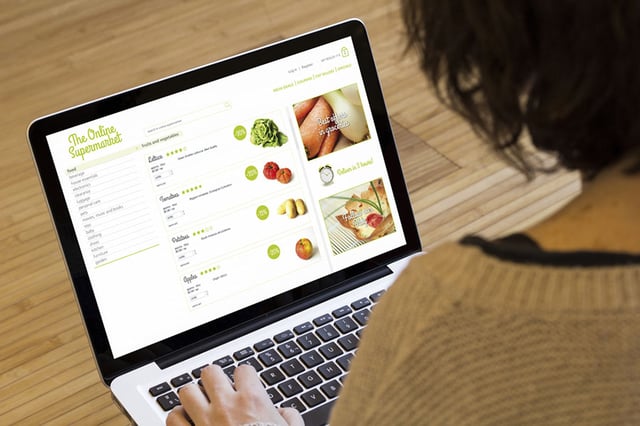How Food Retailers Can Appeal to Hybrid Shoppers
“Hybrid” became a buzzword amid the pandemic, whether it was work, school or the way people shopped for groceries. Hybrid, or omnichannel, shoppers have become a key demographic for food retailers over the past several years, and FMI - The Food Industry Association has shared more details about these consumers in its recent “U.S. Grocery Shopper Trends 2022 – Navigating a Hybrid World” report.
While pandemic worries are subsiding, the grocery industry continues to face unprecedented challenges relating to supply chain disruptions, product availability and high inflationary food prices. Indeed, FMI found that 85% of consumers are concerned about access to food, with 53% seeing prices rise on the foods they prefer and 45% seeking items that are out of stock. Another 26% of respondents said they are concerned about having enough money to pay for food.
While average household weekly spending for groceries has not increased dramatically, and was actually lower in February 2022 than it was at the onset of the pandemic in March 2020, FMI found that higher post-pandemic spending in other areas can mean consumers are feeling the pinch more acutely.
“Given the ongoing volatility in energy and commodity costs, it might take a while for the price of food to come down,” said Heather Garlich, SVP of communications, marketing and consumer/community affairs at Washington D.C.-based FMI, during a webinar detailing the report’s findings.
How Shoppers Have Adapted
While these challenges remain, shoppers are resilient and adaptable. FMI found that 86% of shoppers that are concerned about rising food prices are changing how they shop. Some 51% are looking for more deals, 35% are switching to store brands, 21% are buying less fresh meat and seafood, and 14% are buying less fresh produce.
Grocery shopping continues to evolve, however, with 92% of all American adults now participating. Supermarkets are the most shopped channel among 81% of report respondents, while mass market retailers account for 65% of shoppers, wholesale clubs are 44% and online-only retailers take 30% of shoppers. Each month, consumers shop four different channels and five different banners.
Online food shopping remains above pre-pandemic levels, with 64% of shoppers saying they have bought groceries online in the past 30 days and 15% saying they shop online every time. Among preferred methods of pickup or delivery, 27% of shoppers turn to same-day or next-day delivery, 27% prefer standard shipping, and 25% opt for curbside pickup.
“Even with an extended reach of online grocery shopping following pandemic-driven adoption, online shoppers maintain a distinctive demographic profile,” Garlich explained. “Online shoppers are more likely to be younger, they have families and they have higher income or live in urban settings.”
These findings have driven home the idea that hybrid shopping has fully transformed the food retail landscape. “The blend of in-person and online shopping options available today allow shoppers to mix and match,” Garlich said.
With food prices still rising, shoppers enjoy comparing prices online and browsing a selection of products to get exactly what they want, Garlich shared. Among online shoppers, 62% believe the method is better at saving them time versus in-person shopping, and 40% say online is better than in-person in terms of helping them discover new products.
Hybrid shopping does have its share of challenges, though, as many shoppers believe they have more control over their trips when they shop in-store. As such, 43% of shoppers believe they get better quality products at the store and 70% of grocery trips remain in-person.
“Food, at the end of the day, is deeply personal, and many shoppers still prefer shopping in-person when looking for new ideas of what to cook or eat,” Garlich said. “They like to browse for new products … and the ability to handpick food and beverage provides shoppers a greater sense of control in the quality and the relevance of their products.”
Opportunities for Retailers
The expansion of hybrid shopping, regardless of consumer sentiment, does offer retailers a variety of opportunities to engage with consumers in new and different ways and to create a more seamless experience both online and in-store.
According to Doug Baker, FMI’s VP of industry relations, a main concern among online shoppers is the idea that they can do a better job shopping for themselves. As such, retailers can expand or deploy personal shopping offers.
“This individual who establishes that one-to-one relationship with online shoppers can really help build the trust, it can alleviate the shopper’s anxiety, it can offer greater ability for online shoppers to make in-the-moment decisions at the shelf,” Baker explained.
With substitutions on out-of-stock items being another pain point for shoppers, Baker believes these personal shoppers will allow customers to be in contact – keeping the buyer in control even though they’re not in the store making selections. “It’s really a very neat concierge-type service that retailers are starting to utilize,” he said.
Expectations around in-store experiences have become heightened as the ease of online shopping proliferates, and checkout options and other technological advancements are often top of mind for physical shoppers. Retailer’s apps are becoming more popular as people look for product recommendations, product locators, personalized suggestions and the like.
“Ultimately, it’s ‘how do we use technology to continue to align with the shoppers’ evolving priorities?’” Baker explained.






